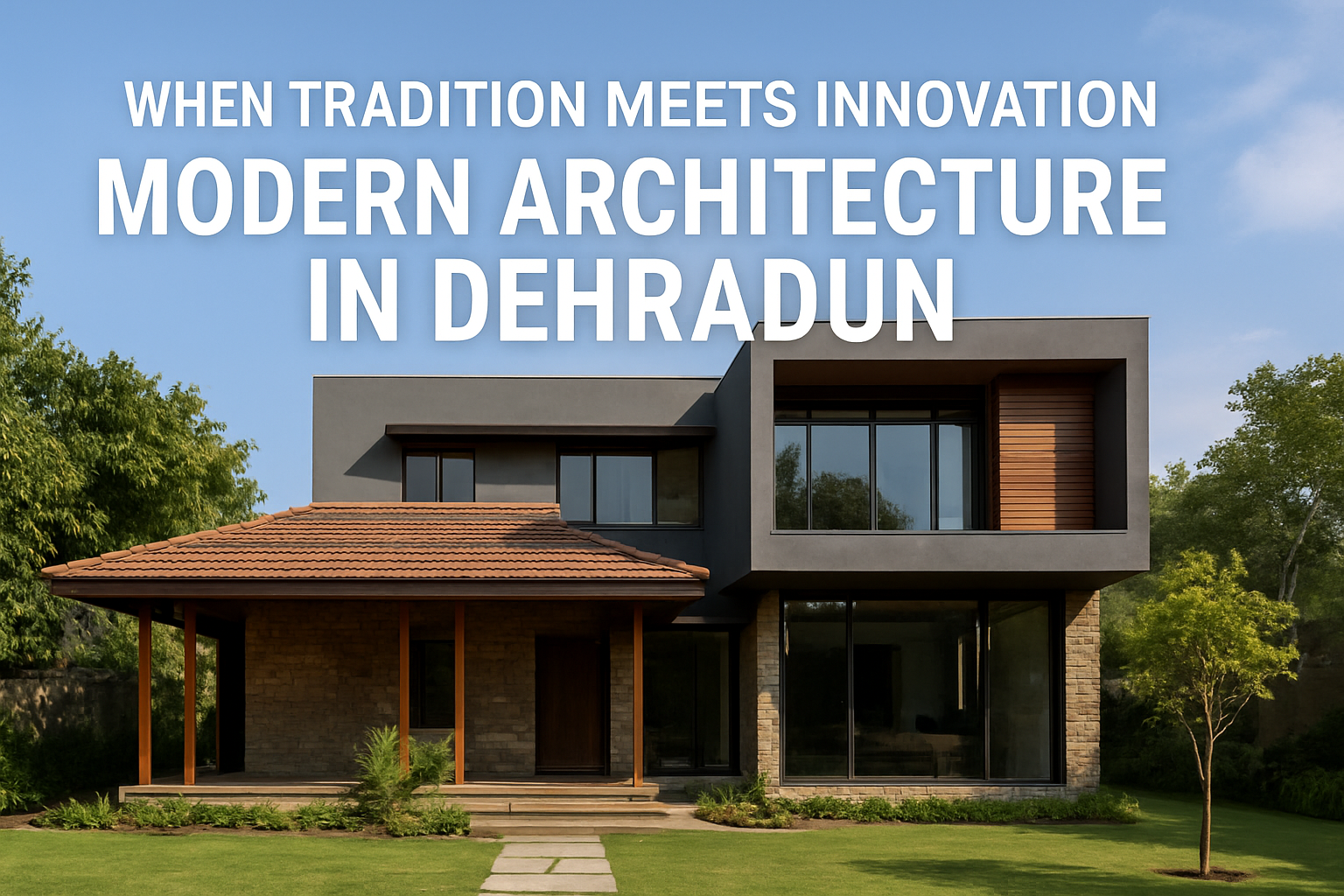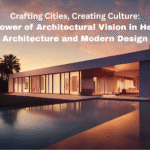When Tradition Meets Innovation: Blending Heritage Styles with Modern Architecture in Dehradun
Dehradun, the capital city of Uttarakhand, is known for its natural beauty, cultural richness, and distinctive architecture. Nestled in the foothills of the Himalayas, it has long been home to heritage structures such as colonial bungalows, traditional Kumaoni and Garhwali homes, and intricately designed temples. However, in the last few decades, the city has also embraced urban expansion, global lifestyles, and luxury living. The result is a fascinating interplay where Modern Architecture in Dehradun is not only about futuristic designs but also about reinterpreting tradition in innovative ways.
Today, architects in Dehradun are crafting spaces that balance old-world charm with modern comforts, ensuring that the city’s cultural soul remains alive even as it moves into the future.
The Architectural Identity of Dehradun: A Blend of Old and New
Dehradun’s architectural identity is unique because it is layered with influences from multiple eras. On one hand, you find structures rooted in Uttarakhand’s heritage—houses with sloping roofs, wood-carved balconies, and natural stone walls. On the other, you see contemporary homes, smart offices, and luxury resorts with sleek finishes, glass facades, and modern amenities.
This coexistence of styles makes Modern Architecture in Dehradun stand out from other cities. Instead of simply adopting global trends, architects are blending international design concepts with local cultural values, creating timeless buildings that feel rooted yet progressive.
Why Preserving Culture While Innovating Is Essential
Architecture is more than just walls and roofs—it reflects identity, culture, and history. In a city like Dehradun, preserving heritage while embracing innovation is essential for several reasons:
- Cultural continuity: Traditional motifs and techniques keep the region’s history alive.
- Sustainability: Many heritage designs, like sloping roofs and courtyards, were eco-friendly and climate-responsive.
- Aesthetic uniqueness: Blending local heritage with modern design gives Dehradun’s architecture a distinct, unforgettable charm.
Thus, Modern Architecture in Dehradun is not about replacing the old but about enriching it with modern functionality.
The Roots of Uttarakhand’s Architectural Heritage
Before understanding how tradition meets innovation, it is important to revisit the architectural roots of Uttarakhand:
- Traditional homes: Village homes were often built with wood and stone, with sloping roofs to withstand heavy rainfall and snow.
- Temples: Ancient temples like Jageshwar and Kedarnath showcase intricate stonework and traditional designs.
- Colonial influences: The British era left behind charming bungalows with wide verandahs, pitched roofs, and large courtyards, many of which still stand in Dehradun.
These elements continue to inspire architects today, serving as a foundation for designing homes and spaces that feel both traditional and modern.
Modern Architectural Demands in Dehradun
As Dehradun evolves into a fast-growing urban hub, modern architecture must respond to new demands:
- Urban expansion: With rising population and commercial growth, functional designs for apartments, offices, and retail spaces are in demand.
- Global lifestyle influence: People now expect open layouts, modular kitchens, home offices, and luxury amenities.
- Smart living: Technology-driven architecture, including automation, energy efficiency, and sustainable practices, is reshaping homes.
This is why Modern Architecture in Dehradun is not simply about beauty—it is about merging practicality, luxury, and sustainability while respecting local traditions.
Where Tradition Meets Innovation
The real essence of Dehradun’s architectural journey lies in how tradition and innovation are blended seamlessly. Architects are creatively reinterpreting local elements:
- Sloping roofs, courtyards, verandahs: Classic features are reimagined with modern materials like steel, glass, and reinforced concrete.
- Heritage aesthetics with modern materials: Natural stone facades are combined with contemporary glass walls for balance.
- Decorative detailing: Traditional motifs, wood carvings, and jaali (lattice) patterns are incorporated into sleek layouts.
This mix creates homes and commercial spaces that not only meet modern needs but also honor the cultural and climatic wisdom of Uttarakhand.
The Benefits of Blending Old with New
Why is this architectural fusion gaining so much attention? The benefits are profound:
- Cultural continuity & emotional connection – Residents feel more rooted when their homes reflect regional heritage.
- Climate adaptation – Traditional designs were naturally suited to Dehradun’s weather. Using these elements ensures energy efficiency.
- Unique and timeless appeal – Blended designs stand out in the real estate market, attracting people who value both luxury and tradition.
Thus, Modern Architecture in Dehradun is not just practical but also deeply meaningful.
Examples of Tradition-Modern Fusion
Several architectural projects in Dehradun are already showcasing this philosophy:
- Farmhouses and resorts – Many luxury resorts near Mussoorie Road and Rajpur Road are designed with sloping roofs and stone exteriors, inspired by Garhwali homes but integrated with modern interiors.
- Residential projects – Urban housing projects now often feature open-plan layouts with heritage-inspired exteriors.
- Heritage Architects’ designs – As a leading firm, Heritage Architects is at the forefront of blending traditional aesthetics with contemporary comforts, creating villas, farmhouses, and commercial spaces that perfectly capture this balance.
These projects prove how Modern Architecture in Dehradun can be both innovative and respectful of tradition.
Challenges in Balancing Both Worlds
While the fusion of tradition and modernity sounds ideal, it comes with challenges:
- Cost factors: Heritage detailing, like stone carving or wooden balconies, can increase costs.
- Maintaining authenticity: It is difficult to preserve the true essence of heritage while adapting it to modern needs.
- Skilled craftsmanship: Traditional designs require artisans with specialized skills, which are not always easy to find.
Despite these hurdles, more clients and architects are realizing the long-term value of such designs.
The Future of Dehradun’s Architecture
Looking ahead, the future of architecture in Dehradun will likely focus on:
- Sustainable heritage-inspired designs: Eco-friendly materials, rainwater harvesting, and solar integration, all while keeping heritage styles alive.
- Cultural + modern identity: Dehradun has the potential to emerge as a model city where heritage meets modern urbanism.
- Global recognition: If nurtured well, Modern Architecture in Dehradun could become an international example of cultural sustainability.
Conclusion
The story of Dehradun’s architecture is one of harmony—where tradition meets innovation, and heritage inspires modernity. By combining old-world charm with contemporary demands, architects are creating designs that are not only functional but also deeply rooted in cultural identity.
For homeowners, investors, and businesses, this blend is an opportunity to build spaces that are timeless, sustainable, and uniquely Dehradun.
If you are looking to create such a balance in your dream project, Heritage Architects is here to help you explore the best of Modern Architecture in Dehradun, blending elegance, tradition, and innovation into every design.






Leave a Reply